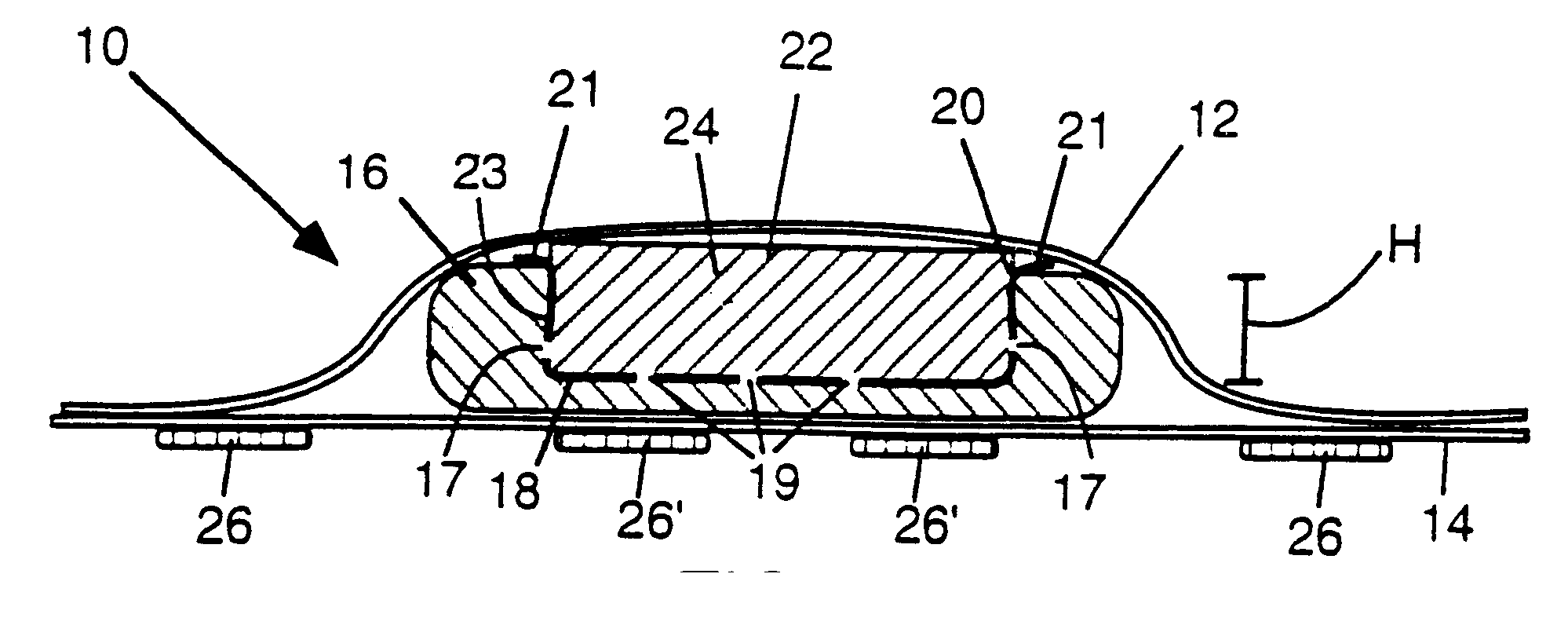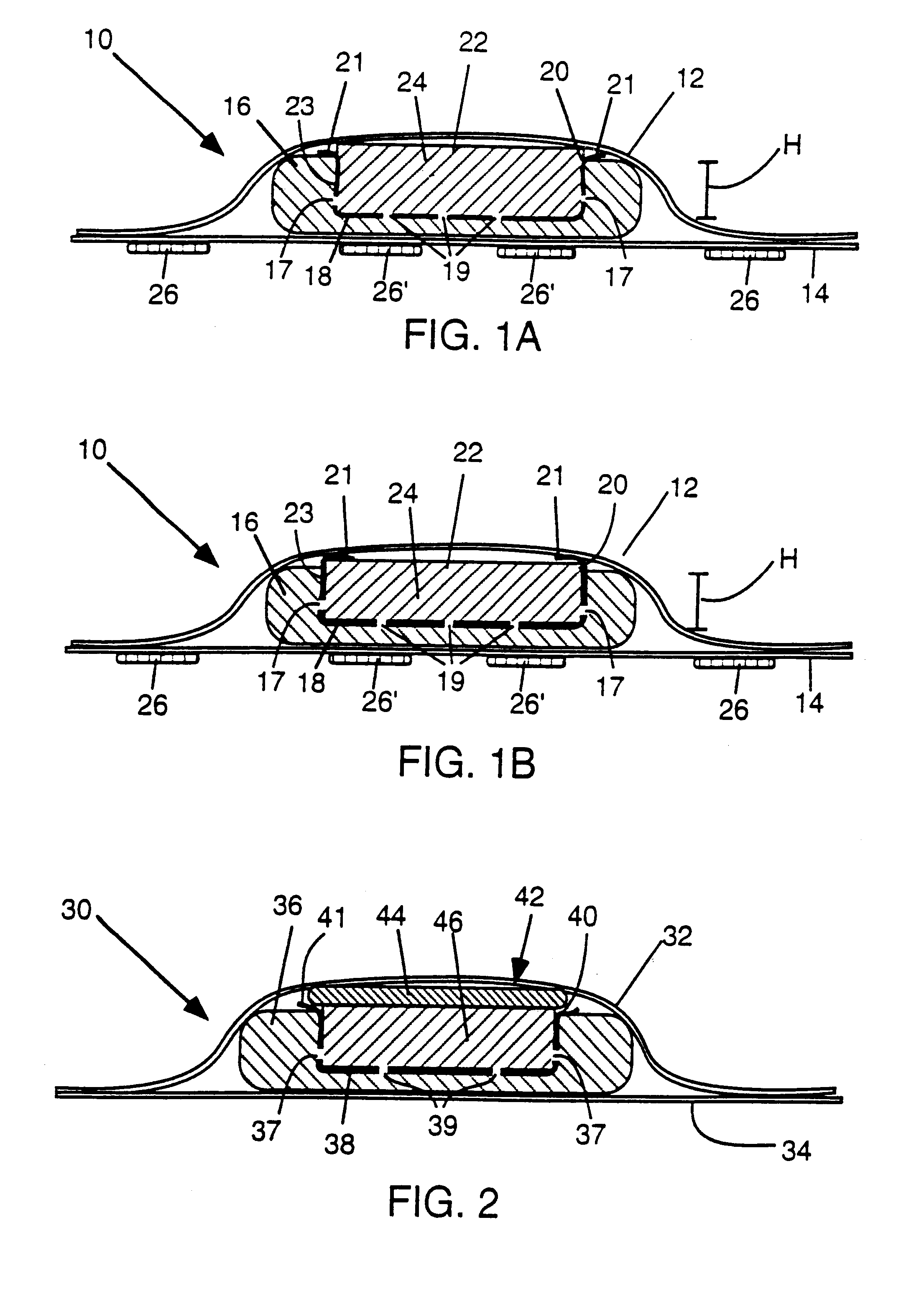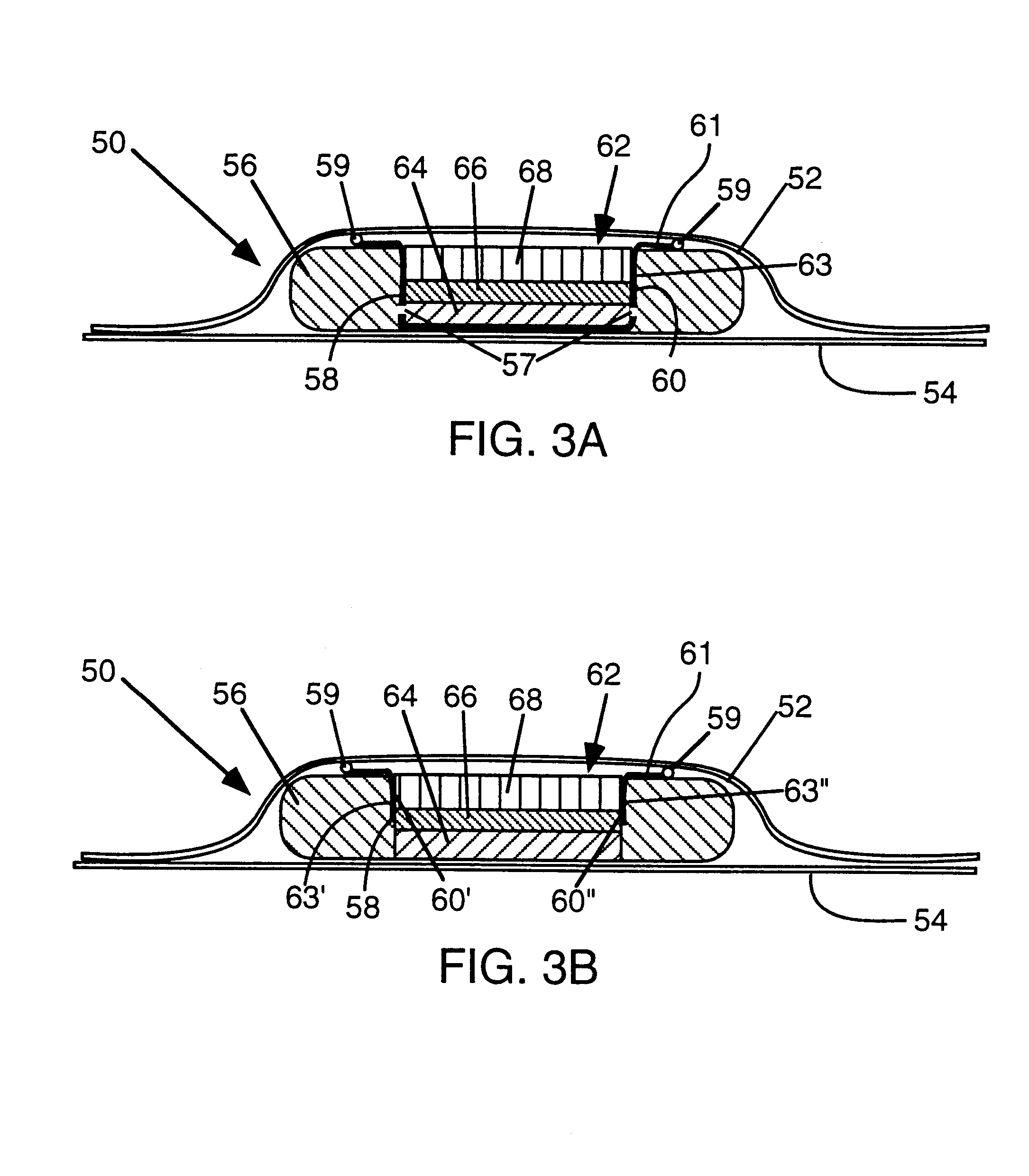Absorbent article with center fill performance
a technology of absorbent articles and filling strips, applied in the field of absorbent articles with center filling performance, can solve the problems of affecting the absorption of fluid, and not preventing fluid from reaching, so as to reduce the likelihood of conta
- Summary
- Abstract
- Description
- Claims
- Application Information
AI Technical Summary
Benefits of technology
Problems solved by technology
Method used
Image
Examples
examples
Several examples of absorbent articles were made with the materials listed in Table 1 below:
TABLE 1 Basic materials used in construction of absorbent articles for the Examples. Component Manufacturer Description Topsheet Spunbond material Kimberly-Clark Corp. 0.6 osy polypropylene spunbond web, "Delta" version, treated with 0.3% add-on of surfactant (described below) Surfactant treatment ICI Americas, Inc 45% (w) polyethoxlated hydrogenated ethoxylated castor oil; 55% (w) sorbitan monooleate Adhesive National Starch and NS-34-5610: slot-coated, pinstripe pattern, Chemical Co. applied at a level of about 5 gsm or less. Fluff Kimberly-Clark Corp. Coosa River CR56 debonded softwood pulp comminuted with a hammermill Densified airlaid webs Completed web Concert Fabrication 90% softwood fibers and 10% binder fibers Ltee with overall densities of 0.1-0.2 g / cc. Fibers Weyerhaeuser Co. NB-416: bleached southern softwood kraft Binder fibers Hoechst Celanese Celbond #255: PET core, activated c...
examples 1-7
Example 1 and other examples described herein were made to have a top view appearance according to FIG. 21. FIG. 21 depicts a central absorbent member 462 surrounded by a hydrophobic ledge 470 and a larger absorbent member 466, which may be an outer absorbent member having a central void or depression or an underlying absorbent member without a central void or depression. The absorbent core comprising the central absorbent member 462 and the outer or underlying absorbent member 466 are enclosed by an underlying backsheet 468, with larger dimensions than the absorbent core to form a rim therearound, and a topsheet (not shown) which is attached to the backsheet 468 at the rim. Optionally, the central absorbent member 462 can be provided with embossed lines as shown in FIG. 21 comprising three long lines 472 and four short lines 474 each about 2 mm wide and approximately 0.4 mm deep.
example 1
pad made without a vertical wicking barrier but with a horizontal wicking barrier; i.e., with a polymeric film disposed horizontally between two superposed absorbent layers. Thus, in Example 1, the horizontal ledge 470 is the exposed horizontal component of a purely horizontal wicking barrier (the impervious wicking barrier of Table 1) which lies in a plane between an upper central absorbent member 462 and an underlying outer absorbent member 466, which is merely a planar absorbent member which lies beneath the central absorbent member (in other examples according to the present invention, the outer absorbent member has a central void into which the central absorbent member is inserted).
In Example 1, a 175 gsm airlaid densified web (as described in Table 1) served as the lower layer of the absorbent core, i.e., as the outer absorbent member 466 but without a central void or depression. The 175 gsm airlaid outer absorbent member was cut to a dumbbell shape with a length of about 21.5...
PUM
 Login to View More
Login to View More Abstract
Description
Claims
Application Information
 Login to View More
Login to View More - R&D
- Intellectual Property
- Life Sciences
- Materials
- Tech Scout
- Unparalleled Data Quality
- Higher Quality Content
- 60% Fewer Hallucinations
Browse by: Latest US Patents, China's latest patents, Technical Efficacy Thesaurus, Application Domain, Technology Topic, Popular Technical Reports.
© 2025 PatSnap. All rights reserved.Legal|Privacy policy|Modern Slavery Act Transparency Statement|Sitemap|About US| Contact US: help@patsnap.com



